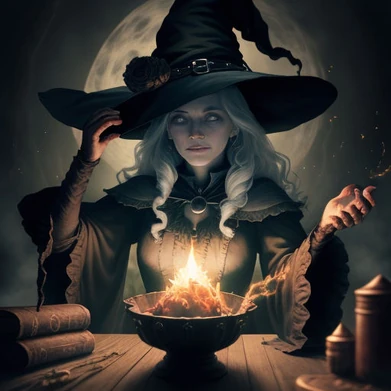The Rise of Modern Witchcraft

In recent years, modern witchcraft and Neopaganism have seen a remarkable resurgence. More people are embracing these spiritual practices as an alternative to mainstream religions. The rise of social media, the search for personal empowerment, and a growing interest in ancient traditions have all contributed to this revival.
What is Modern Witchcraft?
Modern witchcraft is a broad term that encompasses various spiritual paths, including Wicca, eclectic witchcraft, and traditional folk magic. Unlike the historical misconceptions of witches as sinister figures, today’s witches focus on healing, self-discovery, and harmony with nature. Many practitioners follow the Wiccan Rede, which promotes ethical spellcasting and the idea that one’s actions return threefold.
Key Elements of Modern Witchcraft
- Rituals and Spells – These are performed for healing, protection, love, and personal growth.
- Herbalism and Crystals – Many witches use herbs and crystals for their believed spiritual and healing properties.
- Divination – Tools like tarot cards, runes, and pendulums help practitioners gain insight into their lives.
- Moon Cycles – The phases of the moon influence spellwork and rituals.
- Nature-Based Worship – Many witches honor the elements, the sun, the moon, and deities from various pantheons.
The Neopagan Revival
Neopaganism is an umbrella term for contemporary spiritual movements that revive ancient pagan beliefs. This includes Wicca, Druidry, Heathenry, and other traditions inspired by pre-Christian religions. Unlike modern witchcraft, which focuses on magical practices, Neopaganism often involves deity worship and seasonal festivals.
Why is Neopaganism Growing?
- A Return to Nature – Many people seek a deeper connection with the Earth, celebrating nature’s cycles.
- Personalized Spirituality – Unlike rigid religious structures, Neopaganism allows for flexibility in belief and practice.
- Community and Inclusivity – Many Neopagan traditions welcome people from all walks of life.
- Influence of Pop Culture – Books, movies, and TV shows have sparked curiosity about pagan and witchcraft traditions.
The Role of Technology in the Revival
The internet has played a crucial role in spreading knowledge about modern witchcraft and Neopaganism. Online forums, podcasts, and social media platforms allow practitioners to share rituals, spells, and spiritual insights. This digital connectivity has helped many people find like-minded communities and mentors.
Debunking Myths About Modern Witchcraft
Despite its growing acceptance, modern witchcraft still faces misconceptions. Here are some common myths debunked:
- Witches Worship the Devil – Most witches do not believe in or worship Satan. This is a misconception rooted in historical propaganda.
- All Witches Follow Wicca – While Wicca is a major influence, many witches practice other forms of magic without following Wiccan beliefs.
- Witchcraft is Just Fantasy – Many practitioners see it as a spiritual practice with meaningful personal and psychological benefits.
Final Thoughts
Modern witchcraft and Neopaganism are more than trends; they represent a shift toward spiritual independence and a deeper connection with nature. As these practices continue to grow, they offer a path for self-discovery, empowerment, and a sense of belonging in an increasingly chaotic world.
Whether you’re curious about casting spells, honoring ancient traditions, or simply connecting with nature, modern witchcraft and Neopaganism provide diverse and meaningful ways to explore spirituality.

